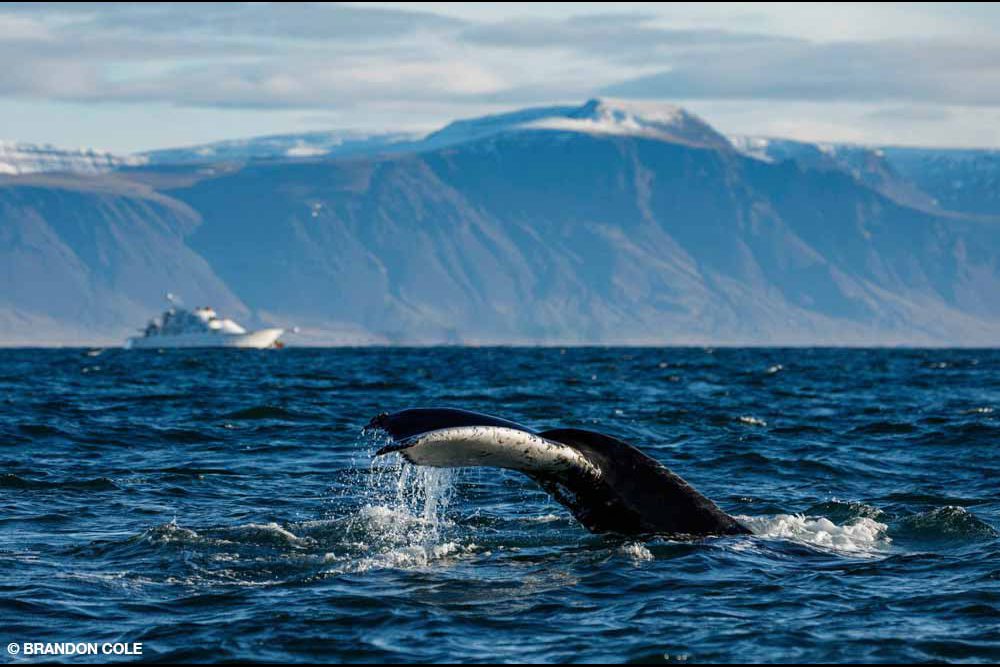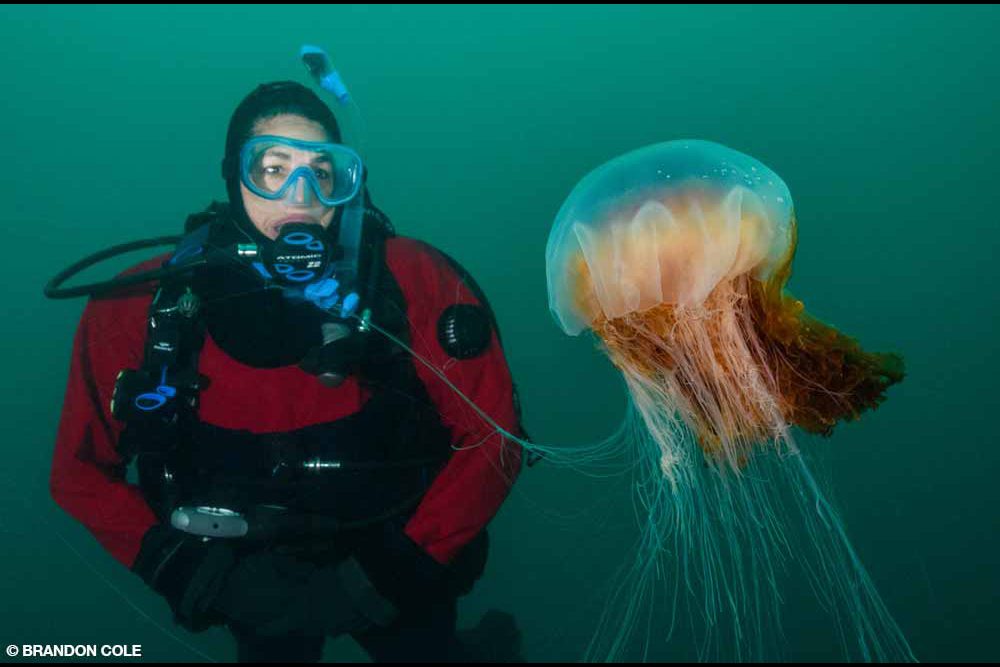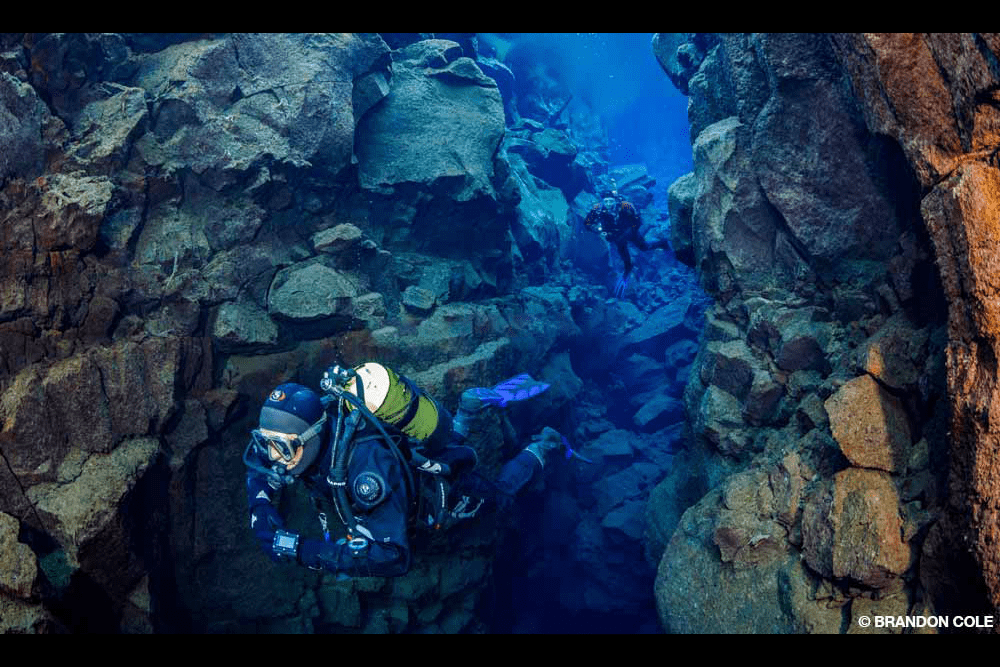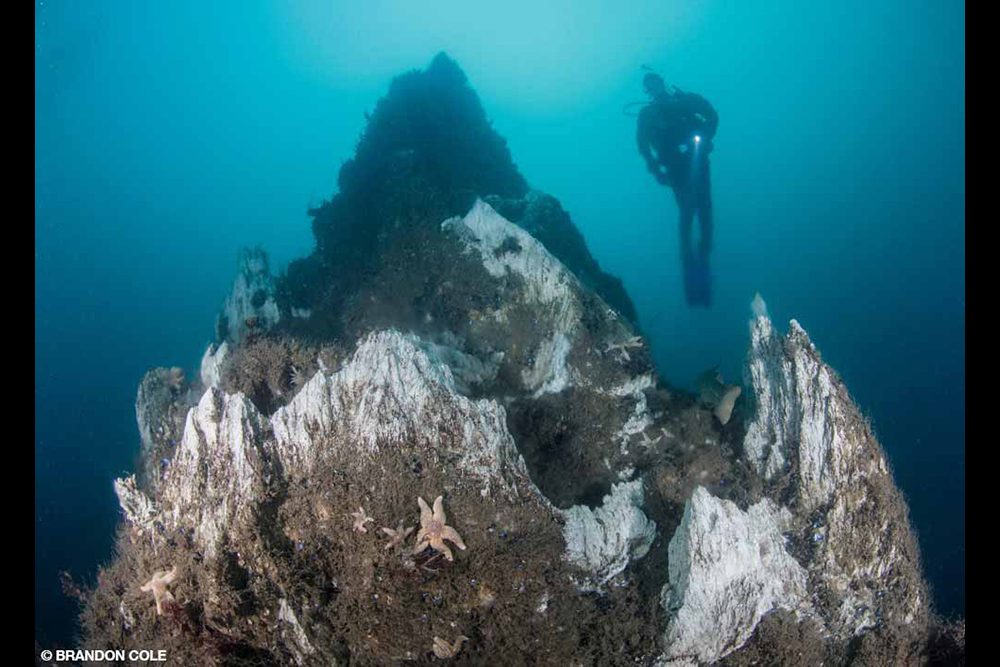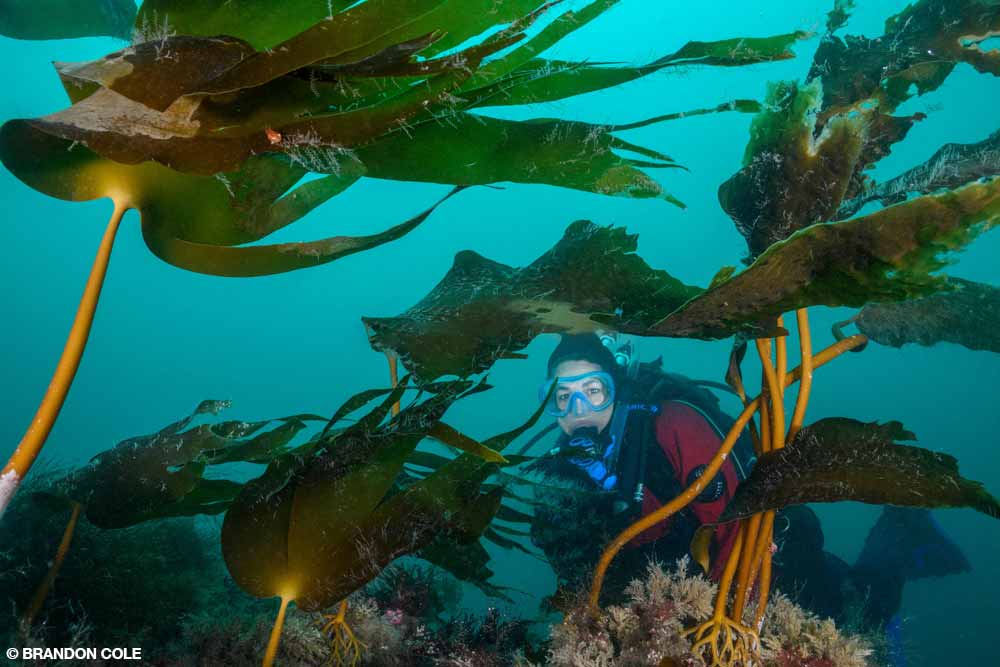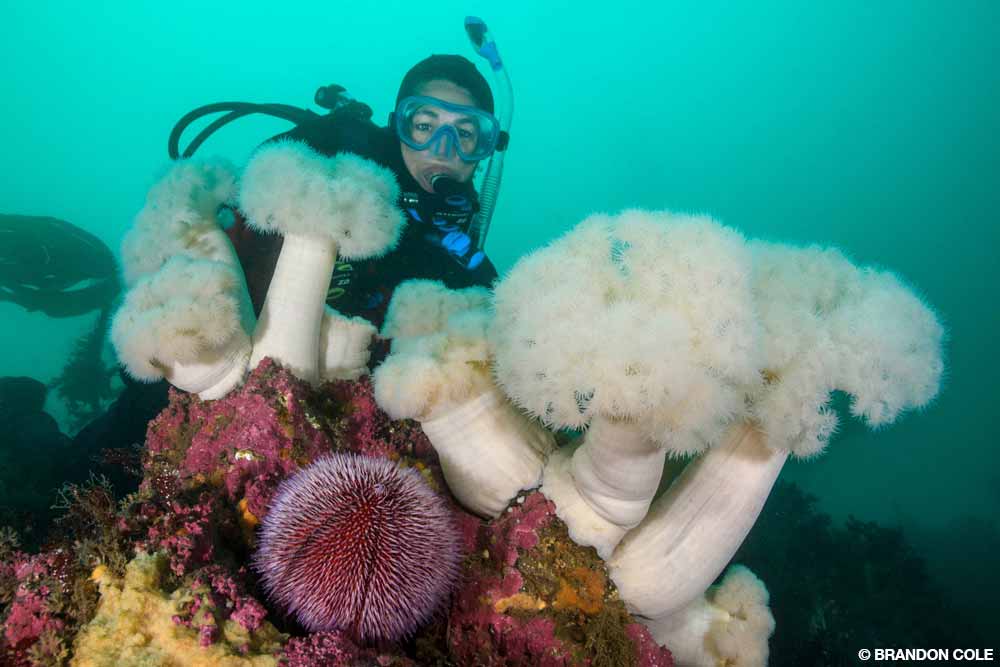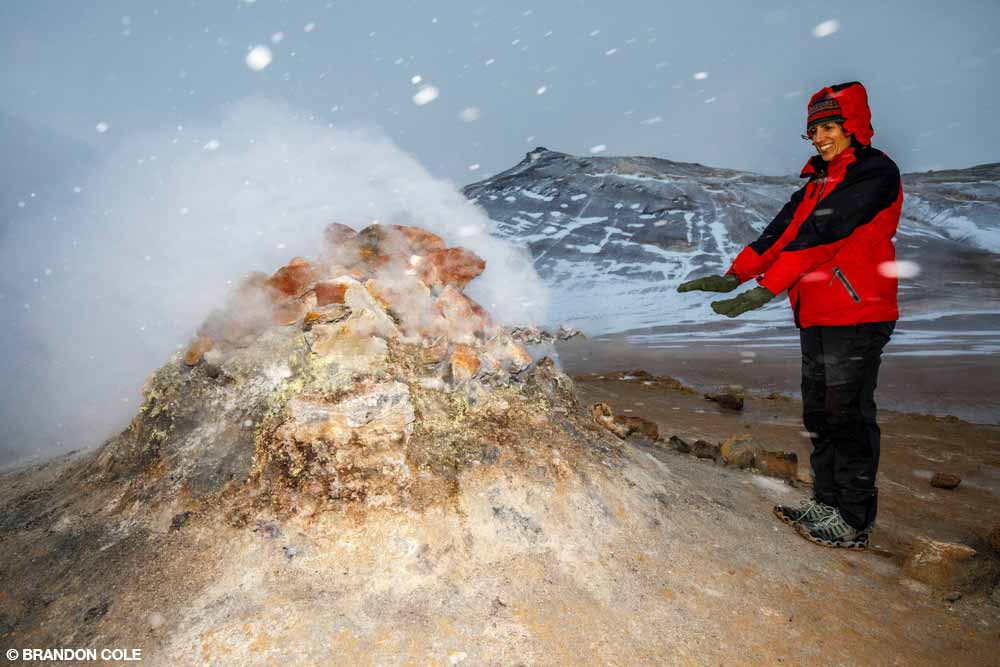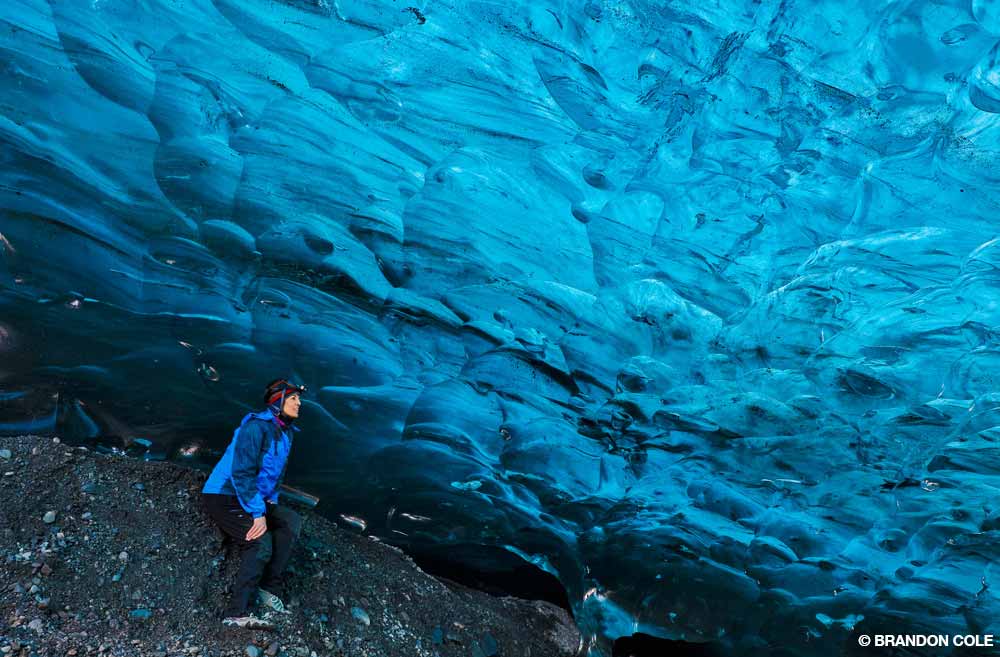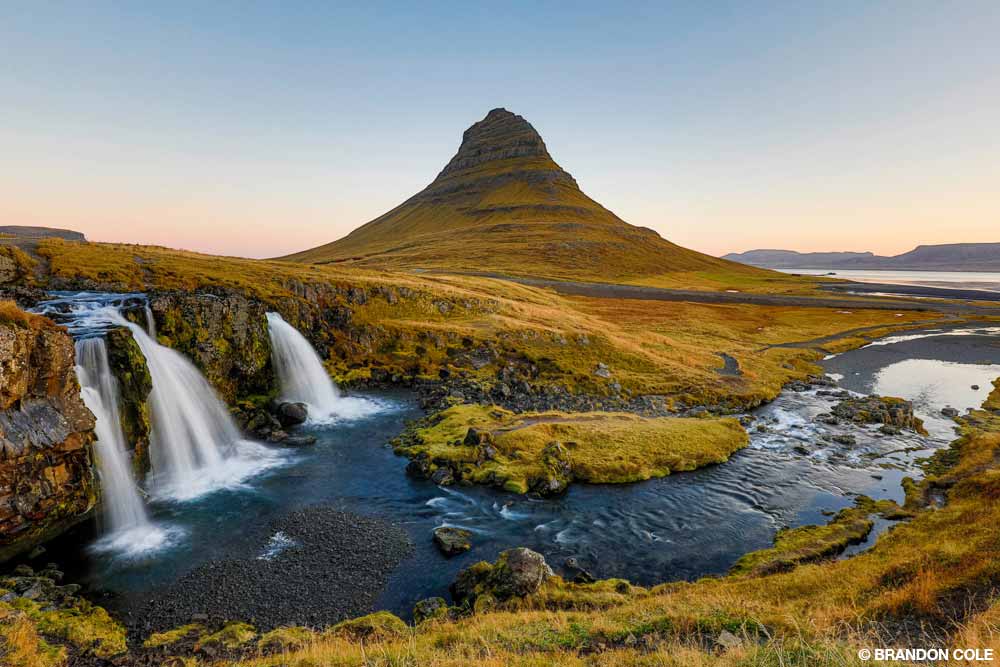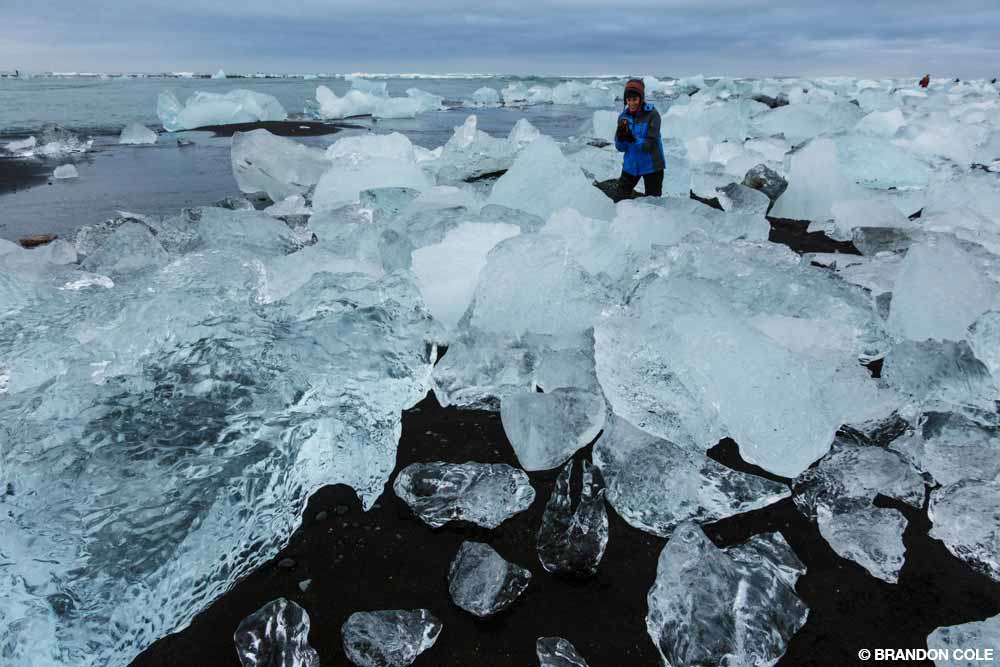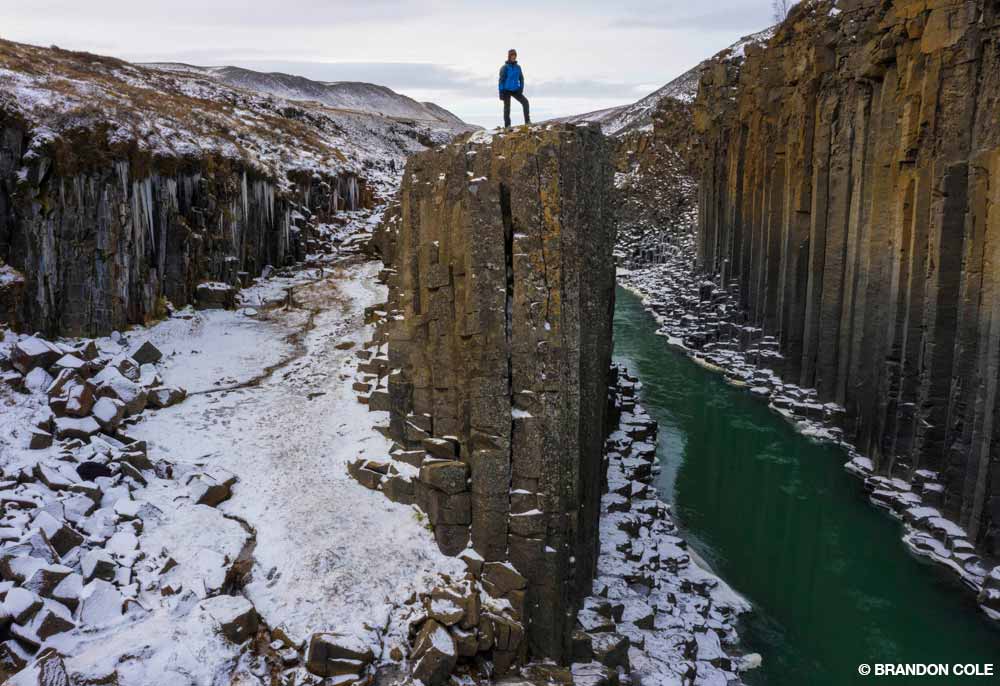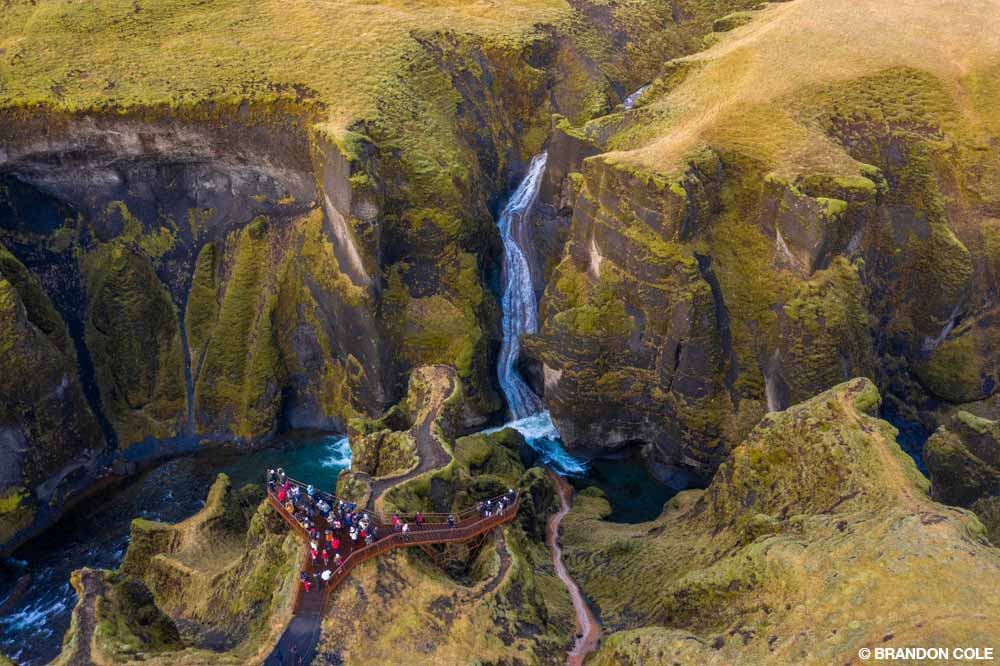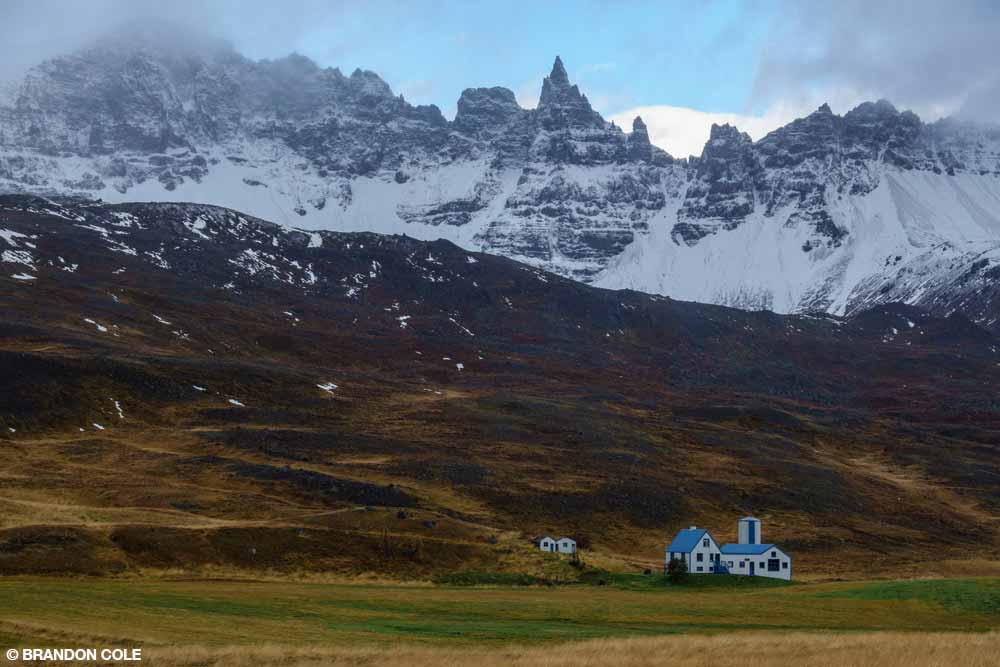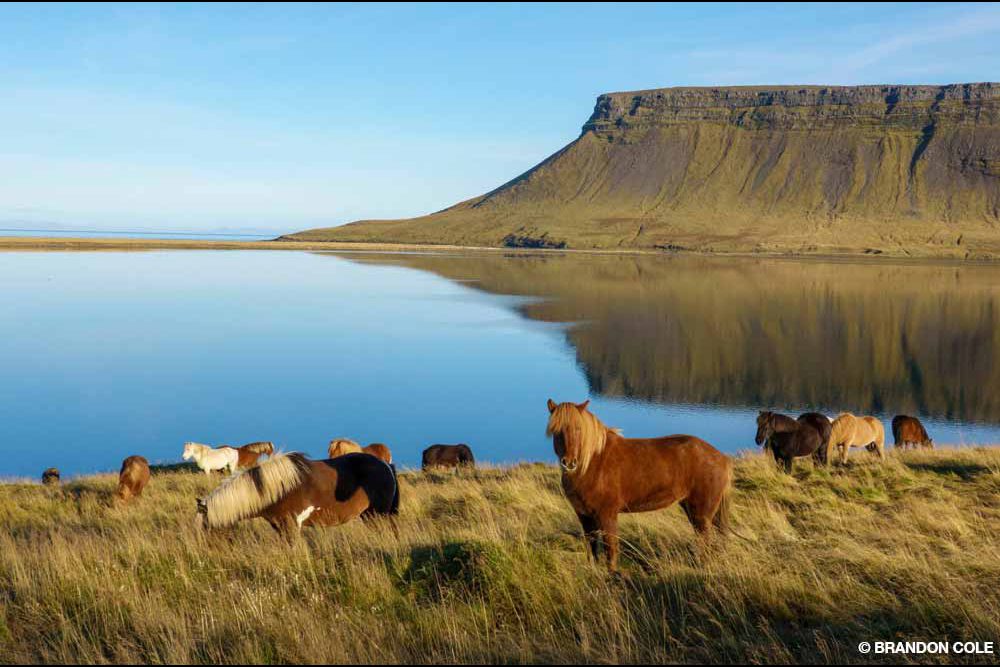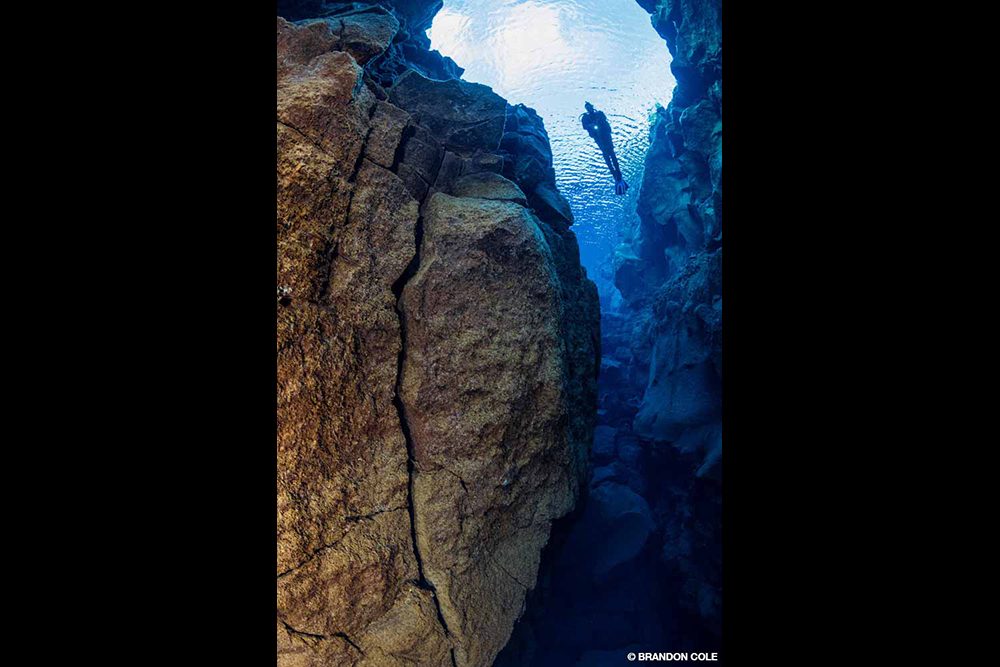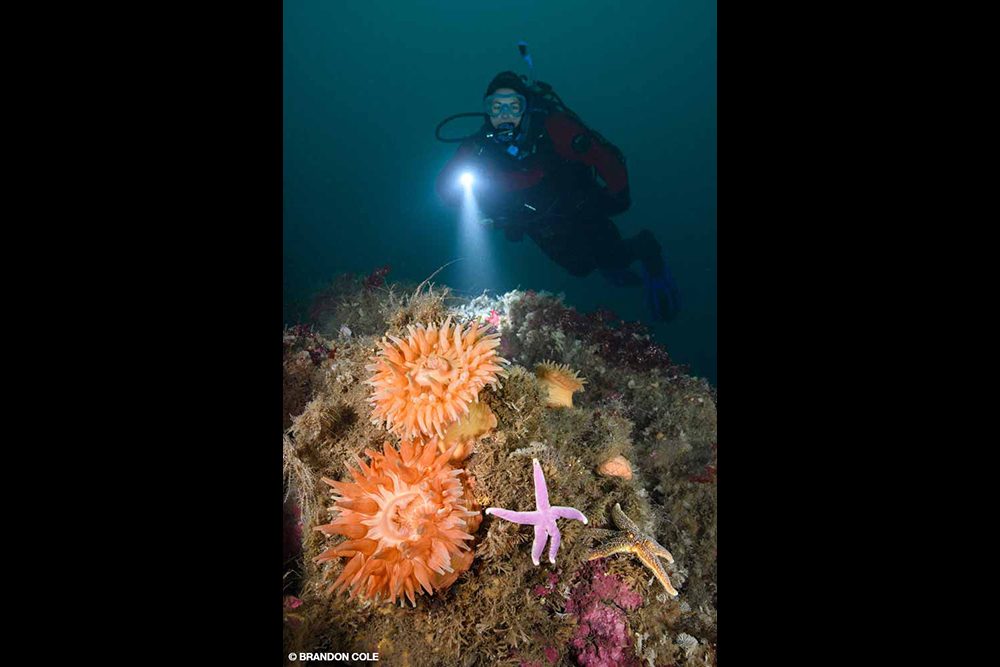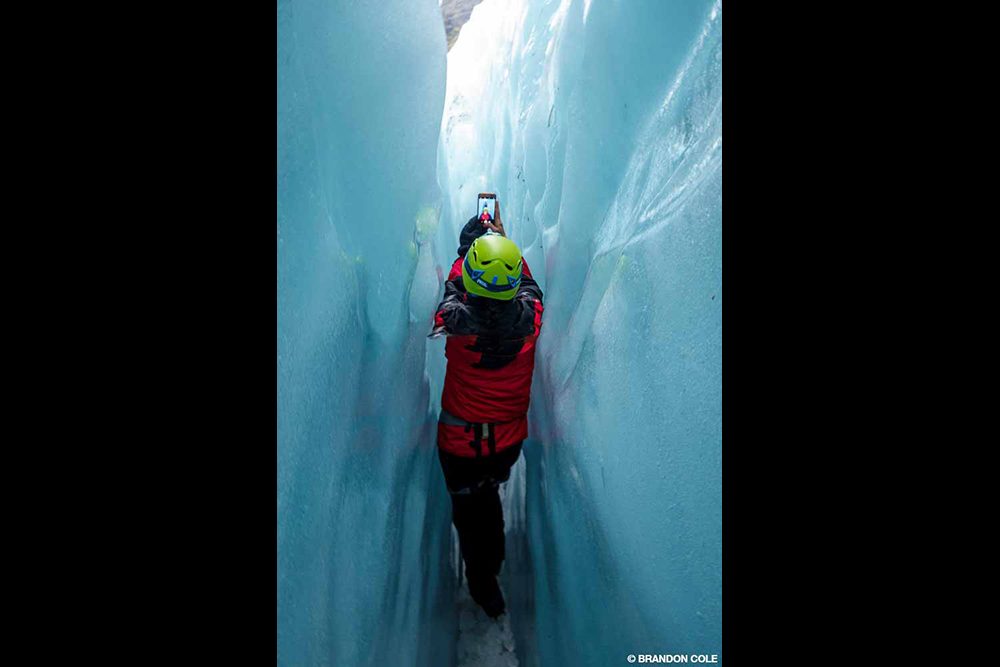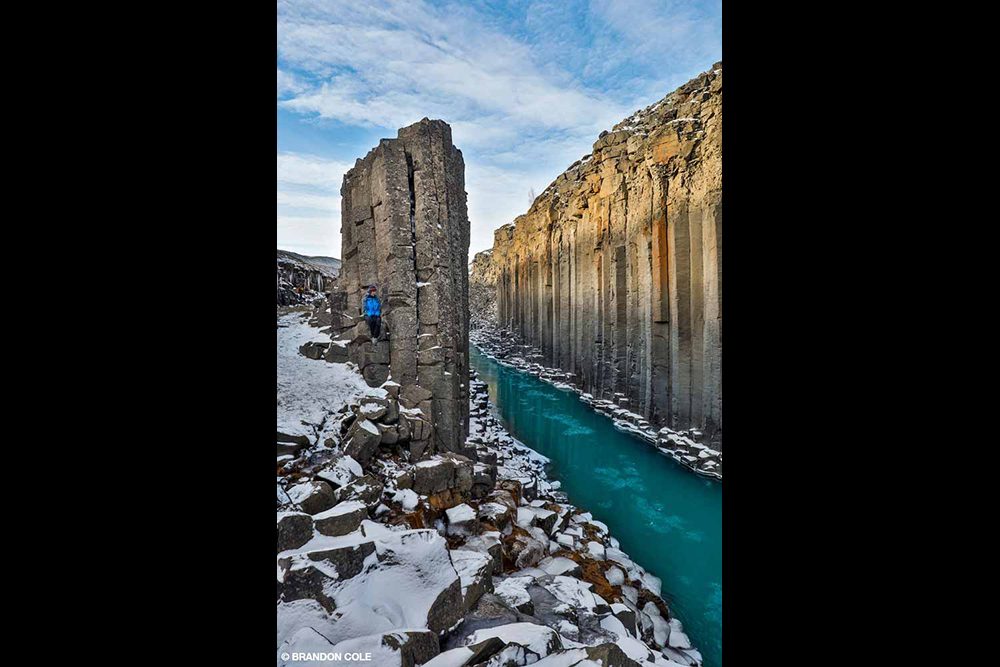Eksplorasi darat dan laut
It’s not every day you can witness the inner workings of our planet by taking a live look under the hood at the engine of creation. Some scientists claim that life on Earth began from hydrothermal vents in the ocean’s abyssal reaches. That realm is much deeper than where I float now, but otherwise it’s not all that different from the fascinating formation before me — a chimney below the sea in northern Iceland.
Tidak Perlu Kapal Selam
Panduan Strýtan pinnacle in Eyjafjörður is a natural wonder, a unique biogeological phenomenon, and Iceland’s first underwater protected area. Towering over the bottom 213 feet below, this smectite clay hydrothermal chimney gushes more than 1,500 gallons of 162°F fresh water into the surrounding cold salt water every minute. Magma underneath Iceland warms the fresh water, which scientists estimate to be about 11,000 years old. Rich in silicon dioxide, it precipitates upon contact with the magnesium in seawater to slowly grow the chimney.
Strýtan rises to within about 50 feet of the surface. It and a cluster of much smaller structures a few miles away are the only known hydrothermal chimneys or smokers in the world that are accessible to recreational divers. Having descended to more than 100 feet, we spiral upward around the living structure. It is 10 to 15 feet in diameter and not plumb-line straight; its profile angles a few degrees in either direction here and there.
Much of Strýtan’s surface is overgrown with algae, hydroids, tunicates, and bryozoans. There are beige sea stars and clumps of black mussels. Juvenile cod tuck in close to the vertical reef, while larger adult fish hover off to the side. I am especially drawn to the white sections resembling tumorous growths — some smooth, others craggy — that are the most recent mineral deposits. Here I can see shimmering swirls of warm fresh water jetting forth, causing the nearby algae to flutter and my vision to blur. My imagination sparks, and I am convinced that if I had a microscope I would see chemicals reacting, atomic building blocks coming together, cells dividing, and life exploding into being.
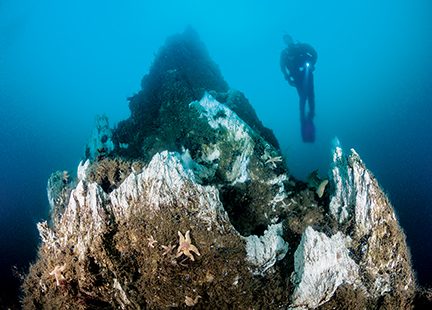
Menyelam dengan Viking
Dikenal sebagai negeri api dan es, Islandia sangat alami dan menakjubkan. Jutaan turis mengunjungi negara kepulauan ini, yang terletak di Atlantik Utara antara Greenland dan Norwegia, untuk mengagumi air terjun, mendaki gunung berapi, dan merayap di bawah gletser. Hanya sedikit orang yang menceburkan diri di bawah ombak, tetapi kita tidak bisa menolak kesempatan untuk melihat sebanyak mungkin tempat yang luar biasa ini.
To experience the diving that very few people know about, we visit Akureyri, Iceland’s second-largest urban area behind Reykjavík, with nearly 19,000 residents. The Norse Viking Helgi magri Eyvindarson settled Akureyri and the island of Hrísey in the ninth century. The town is now the diving hub (hub being a relative term) in northern Iceland and the gateway to exploring Eyjafjörður.
We cast off the lines and motor into the fjord. A knife-edged wind and swirling snowflakes make the 20°F air temperature feel below zero. My wife and I are already fully geared up, but our divemaster and skipper are still bareheaded and without gloves as they smile and chat away, apparently impervious to the elements. Wishing for even a single potent drop of their Viking ancestors’ blood will not make me any warmer, so I compensate with a drysuit, dry gloves, an 8 mm hood, and double layers of high-tech undergarments. It is only a five-minute ride in the open inflatable from Hjalteyri harbor to the dive site, where the 41°F water is sure to be bliss.
Wishing for even a single potent drop of their Viking ancestors’ blood will not make me any warmer, so I compensate with a drysuit, dry gloves, an 8 mm hood, and double layers of high-tech undergarments.
Terumbu karang berbentuk lingkaran dengan kedalaman antara 50 hingga 75 kaki, Arnarnesstrýtur showcases the fjord’s other shallow hydrothermal smokers and excellent marine life diversity. Curious Atlantic cod greet us almost immediately upon touchdown. Bronzy gold with fine spots, large eyes, and seemingly too many fins, they are handsome fish, even with their gummy lips and peculiar, single wormlike barbel dangling from their chins. We swim past a stand of Laminaria tangle kelp, while a lion’s mane jellyfish drifts through the green water in the opposite direction. There are white plumose anemones resembling huge stalks of cauliflower sprouting from rock painted pink purple by coralline algae, hermit crabs, and salmon-colored nudibranchs with spiky gills.
All these species — cod excluded — evoke memories of my local diving in the Pacific Northwest thousands of miles away. All are but the prelude, however, to the wolffish Anarhichas lupus. Alasan utama saya berada di sini, menyelam bersama Viking pada bulan Oktober, adalah untuk bertemu sepupu Samudra Atlantik dari belut serigala lokal kesayangan saya Anarrhichthys ocellatus. Arnarnesstrýtur has a handful of the beauties in residence. One reclusive wolffish is tucked way back in its den, valiantly guarding a clutch of eggs. He ignores the quahog (a clam) our guide offers. A wolffish celebrity named Alex, however, excitedly slither-glides out of his crevice to devour the treat and pose with a snaggle-toothed grin. Fifty miles from the Arctic Circle, I am in paradise.
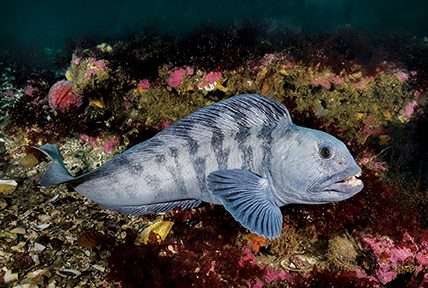
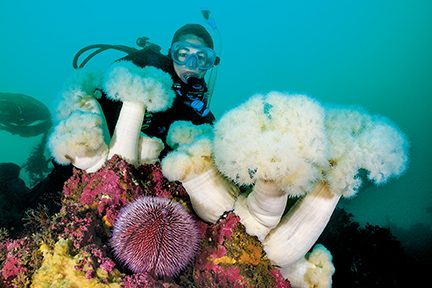
Perjalanan Jalan Lingkar
With our dive gear and underwater cameras packed away and replaced by hiking boots, snow pants, camera tripod, and drone, we rejoin the mainstream and point our little four-wheel-drive rental car east on Route 1, the famed 828-mile Ring Road that circles Iceland’s perimeter. We will travel clockwise and visit jaw-dropping sites topside, many of which have become international Instagram favorites.
It pays to be choosy with so many waterfalls vying for your time. Goðafoss (“waterfall of the gods”) reminds me of Niagara Falls with its semicircular shape. The new-fallen snow elevates this waterfall to among the trip’s best.
An hour east of Akureyri is the Lake Mývatn area, where we had planned to spend one day but stay for three. Iceland’s volcanic pedigree is on fine display here. We hike to the top of the snow-mantled Víti crater and fly via drone over the imposing Hverfjall volcano and the strange pseudo-craters at Skútustaðagígar along Lake Mývatn’s southern rim. These small craters formed about 2,300 years ago when a river of lava flowed over the lake and surrounding wetlands, resulting in steam-fueled explosions that left the divots seen today.
Gelembung-gelembung lumpur dan asap belerang yang berbau busuk yang keluar dari fumarol menanti kami di area panas bumi Hverir. Dengan mengenakan lampu depan dan sepatu bot berduri, kami menuju ke bawah tanah dan masuk ke dalam kegelapan Lofthellir, sebuah gua lava di mana pahatan es yang nyata menetes dari langit-langit dan menonjol dari lantai yang membeku.
Hiking along a sheep path for an hour takes us to Stuðlagil Canyon, through which the glacial Jökla River flows. Looming over this ribbon of green-blue water are sheer walls composed of hexagonal basalt columns. This magnificent, artistic, natural basaltic lava architecture was also born of fire and ice.


Pantai Selatan yang Menakjubkan
down to Höfn on the country’s southeastern corner. We could be in Reykjavík in six hours if we push it, but that would mean missing many of Iceland’s star attractions. It will be challenging to do everything we want along the southern coast in only four days.
At the foot of Vatnajökull, the largest glacier in Europe, icebergs of all shapes and sizes in Jökulsárlón lagoon jockey for position as they flow out to sea. Here they fracture into smaller pieces to be washed ashore on Diamond Beach, appearing as precious gems gleaming on sand as black as velvet. We later join guided tours to trek over the fissure-riven surface of the mighty Vatnajökull and beneath its belly to explore ice caves glowing sapphire and cerulean.

Sturdy Icelandic ponies take us for a ride along Reynisfjara’s black sand beach near the village of Vík í Mýrdal, while winds howl and waves crash into the menacing, fanglike rock spires just offshore. We are so thoroughly drenched by misty spume while photographing Seljalandsfoss and Gljúfrabúi waterfalls that perhaps I should have pulled out my underwater camera housing for the job.
Kencan dengan Piring
We have come full circle and are back in Reykjavík, where this Icelandic saga began. But it is not over quite yet. Onboard a zodiac, we spy humpback whales and white-beaked dolphins doing their thing in Faxaflói Bay.
Although we have been gazing at the galaxy every night, we have not seen the northern lights dancing in the sky due to cloud cover and cosmic luck, so we content ourselves with the Aurora Reykjavík museum’s stellar virtual experience.
Kami melangkah dengan hati-hati di atas ladang lava baru di gunung berapi Fagradalsfjall yang baru saja meletus beberapa bulan yang lalu, dan kemudian merendam diri kami yang lelah di kolam renang luar ruangan berpemanas panas bumi di Blue Lagoon. Kami berkeliling Lingkaran Emas untuk melihat geyser Strokkur dan air terjun Gullfoss, sambil menantikan Silfra di Taman Nasional Thingvellir.
Undoubtedly the most popular dive site in Iceland, Silfra is a fissure at the northern end of Lake Thingvallatan. Created by earthquakes in 1789, the Silfra fissure cut into an underground spring, allowing glacial meltwater to flow into the site. We submerge and go with that flow, following single file behind our dive guide, swimming slowly while descending and ascending as we follow the chasm’s ragged contours.
My eyes are wide with amazement at the scenery. The fissure walls and the boulders below look as if immortal giants chiseled them. And the visibility is seemingly forever — 300 to 400 feet. The water is so clear that my freezing brain insists it must be fake — a clever, computer-generated backdrop. But the rock to either side of us is real.
We pause for a photo at a choke point, stretching our arms wide to span Silfra’s narrow gap. On one side we touch the North American tectonic plate, while the other hand grips the Eurasian plate. It was epic. I imagine that the walls are pressing in on me, but the opposite is true. The two continents are drifting apart at about an inch per year. Iceland is geology in action.
As we lumber back to the parking lot on legs not yet returned to the living, a well-dressed, elderly gentleman from a group of nondivers who have just disembarked from a tour bus asks me, “Isn’t the water freezing? Why would you do this?”
I struggle for words, still locked in mental hibernation induced by our 52-minute immersion. Sputtering to life, I smile and say, “Because it’s cool.”
With my teeth chattering, I excuse myself and waddle on, eager to dive between worlds again. After all, it’s not every day you can throw yourself into the middle of a tug-of-war between primordial forces, stealing a glimpse into what makes the boiling, freezing heart of Iceland beat.
Cara Melakukan Perjalanan
Menuju ke sana dan berkeliling: All international flights to Iceland arrive in Keflavík (KEF), about 30 miles from Reykjavík. Once in Iceland, many visitors join organized group tours on day trips, which often provide transportation. Other visitors rent vehicles.
Kondisi: People visit Iceland year-round. Tourism is more popular in summer, when the weather is warmer and the days are longer. Each season has its perks. Choose summer, for example, to hike and camp in the interior, kayak among icebergs, and see puffins. To explore blue ice glacier caves, go dogsledding, and have a chance to see the northern lights, you’ll need to visit in winter.

May through September are the most popular months for diving. Eyjafjörður and ocean dive sites are weather dependent, and cancellations due to rough seas can happen any time of year. Ocean temperatures near Akureyri range from upper 30s°F in winter to upper 40s°F in summer; it is a little warmer near Reykjavík. Visibility varies widely from 10 to 60 feet. Silfra is much less weather dependent, with water temperatures of 36°F to 38°F year-round, and the visibility is consistently excellent.
Gear: Kenakan pakaian selam kering, baik milik Anda sendiri atau yang disediakan oleh operator selam Anda. Beberapa operator meminta bukti sertifikasi khusus pakaian selam drysuit atau menawarkan kursus. Jas hujan (jaket dan celana) bagus untuk aktivitas di atas permukaan air. Bawalah pakaian dalam dari bulu domba, wol, dan polipropilena untuk pelapis. Sepatu hiking yang kokoh dan tahan air adalah suatu keharusan. Fotografer akan mendapatkan keuntungan dengan memiliki tripod untuk fotografi lanskap dan filter dengan densitas netral untuk pemotretan air terjun dengan pencahayaan yang lama.
Dukungan: Dive infrastructure is limited outside of the Reykjavík and Akureyri areas. Most operators can provide all the gear you need if you do not bring your own. Many dive sites, such as Strýtan and Silfra, require you to dive with a guide. To learn more about Iceland’s marine life, visit sealife.is. Tour companies can facilitate the many topside adventures Iceland offers, such as viewing waterfalls, hiking glaciers, chasing the aurora borealis, and trekking the Highlands. Iceland’s official tourism site is visiticeland.comdan guidetoiceland.is berguna untuk meneliti lokasi dan memesan tur.
Jelajahi Lebih Lanjut
See more of Iceland in Brandon Cole’s bonus photo gallery.
Watch the video below to see the Strýtan hydrothermal chimney in action.
